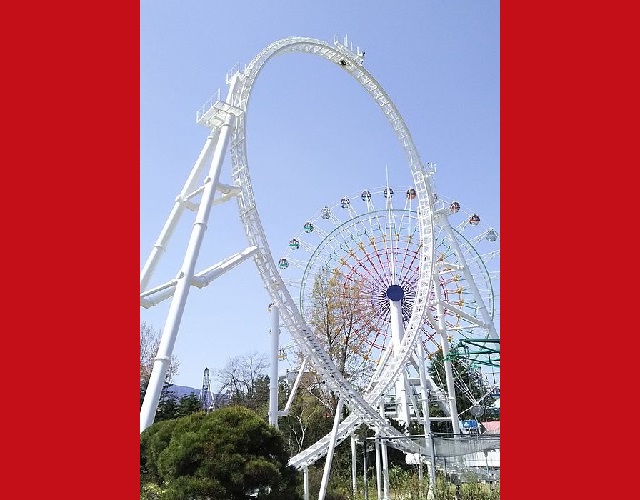Japanese roller coaster keeps breaking riders’ bones, now under federal investigation

”Do-Dodonpa” is supposed to be the sound that drums make, but what’s been happening recently is more like “snap snap.”
With Tokyo Disneyland having such an enormous presence, other theme park operators in Japan have to find their own special niche to focus on. Universal Studios, for example, has been adding plenty of domestic pop culture appeal with its video game and anime tie-ups. Puroland offers all the kawaii culture of Hello Kitty and her Sanrio friends. And Fuji-Q Highland, in Yamanashi Prefecture? That’s the place to go for roller coasters.
Oh, and broken bones too, it turns out. Fuji-Q, a popular destination for day-trippers from Tokyo, already had a reputation as a place to test your courage with its collection of Japan’s fastest, highest, and most intense thrill rides, and now a whole new fear factor has been discovered in relation to the park’s Do-Dodonpa roller coaster.
▼ The Do-Dodonpa’s launch sequence (you might want to turn your speakers down)
The steel roller coaster is known for its incredible launch velocity, in which passengers reach a speed of 180 kilometers (112 miles) per hour in 1.56 seconds. The acceleration subjects the body to 3.75 Gs, which is more than astronauts experience when blasting off in a space shuttle, and not all that much less than a fighter pilot’s jet being catapult launched from an aircraft carrier.
▼ Left: Supposedly a fun way to spend an afternoon
Right: Something only people in peak physical condition and with a willingness to risk their lives do
ド・ドドンパの加速度はこれくらい。 pic.twitter.com/5TLwalaixr
— ベルカ宇宙軍 (@noradjapan) August 21, 2021
But while Do-Dodonpa, which opened in its current configuration in the summer of 2017, is one of Fuji-Q’s biggest draws, the force with which it pushes the body back is more than some riders can take. On Saturday, the park announced that since December of last year it had confirmed four cases of Do-Dodonpa riders, both men and women between the ages of 30 and 59, who suffered broken bones during their rides. And if you’re imagining they maybe banged a forearm into the car because they weren’t seated properly, think again, as the injuries are compression fractures in the neck and spine.
After announcing the injuries, Fuji-Q set up a hotline for others who’d experienced extended physical pain after riding Do-Dodonpa, and within two days received an additional an additional nine claims, with two people saying they’d since been diagnosed with fractured bones. “Right at the start, the car just goes ‘Whooosh!’, and it shakes your head around so much…’This might really be messing my neck up,’ I remember thinking,” recalls a 21-year-old woman who rode Do-Dodonpa in early July. She’s since experienced pain and loss of mobility in her neck, making it hard for her to see where she’s walking and causing her to miss work. After seeing Fuji-Q’s announcement about the initial four confirmed injury cases, she decided to see a doctor, and a CT scan confirmed that she has a fracture in her neck.
With roughly 210,000 visitors having ridden Do-Dodonpa since last December, even if all nine new injury claims turn out to have indeed been caused by the coaster, that’s still a very small percentage of its total ridership. On the other hand, most people would agree that one fractured spine is one too many for an amusement park ride, and so Do-Dodonpa is currently closed while it’s being inspected by prefectural and federal authorities for possible violations of Japan’s Building Standards Law.
Sources: Kyodo via Hachima Kiko, NHK News Web, Yahoo! Japan News/TBS News via Otakomu, TBS News
Top image: Wikipedia/Tao1250 (edited by SoraNews24)
● Want to hear about SoraNews24’s latest articles as soon as they’re published? Follow us on Facebook and Twitter!
Credit:

0 comments: